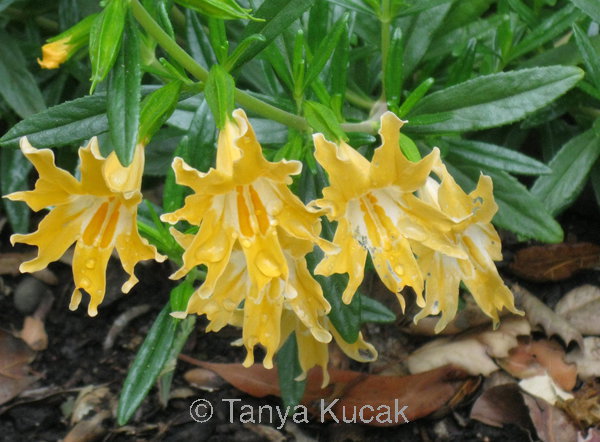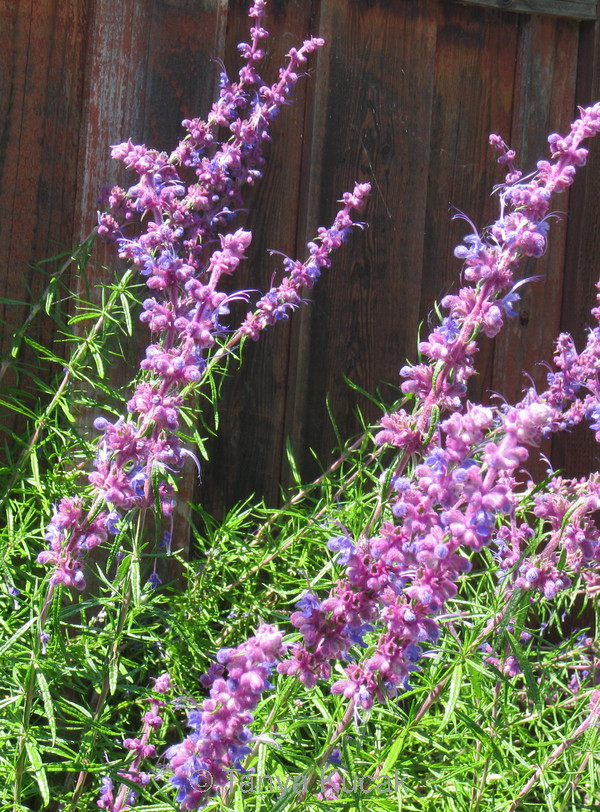
Proper pruning can make your native garden more appealing, according to landscape designer Patricia Evans, who spoke to a group of native-gardening enthusiasts in Los Altos this month. You can “clean plants up so they look better” and remove deadwood. If your plants are prone to legginess, pruning will “stimulate more compact growth and make the plants sturdier,” she said. Adjusting the shape of some plants is also appropriate, she said. But you shouldn't continually have to make a plant smaller. If you put a plant in a space that can't accommodate its mature size, you'll have two options: “rip it out and start over, or spend lots of money pruning it.” “Pruning should respect the habit of the plant,” Evans said. “You can't turn a vase-shaped shrub into a mounding shrub” or vice versa, or keep a tree small. As a general rule, prune plants after they have bloomed. You can prune spring- and summer-flowering natives in late fall, and those that bloom in the winter (as well as manzanitas and other plants susceptible to wet-season fungal diseases) in late summer.
Some plants tolerate pruning better than others. It's almost always safe to remove spent flowers (if you're not leaving seedpods for the birds), and older branches if they are in the way of fresh new growth. Fern fronds that turn brown can be cut to the ground, but be sure not to damage the good-looking or budding fronds. The branches of a shrubby monkeyflower can get “quite long, especially with a little shade or water,” Evans said. She prunes leggy branches back to 6 inches. California buckwheat tolerates a reduction of half its width and height each winter, she said, as long as you retain its mounding form, but an alternative is to remove only the spent flowers.

If monkeyflower branches get too long, you can reduce them to 6 inches long in the winter. These semiwoody shrubs are prone to flopping over or getting too leggy if they get too much shade or water.
Caning shrubs often benefit from removal of the biggest, oldest canes each year to keep them in check. Creek (aka redtwig) dogwood wants to form a thicket, but if you cut back the oldest stems, you will be rewarded with more of the younger, redder stems. Likewise, her western spicebush “is in a big spot but wants to be bigger,” so Evans prunes it annually, and cuts her mock orange to 2 ft. high each year, leaving some arching branches.
Lest you get carried away, Evans cautioned that Cleveland sage can be killed by overpruning its woody stems. The flexible branches of ground-hugging Bee's Bliss sage, however, root as they touch the ground and “can be kept narrow in a parking strip.”

Be careful to use a light hand when pruning cleveland sage. Cutting into the mature woody stems looks unsightly, and you can kill it by overpruning. Purple sage, on the other hand, can safely be cut back by one third.
Finally, sometimes you can break the rules. Training a plant to grow flat against a wall as an espalier, for instance, requires regular and extensive pruning. In her own garden, Evans has espaliered fuchsia-flowered gooseberry, toyon, and coast silk-tassel. Another exception to the rule is elderberry: “You can have a lot of fun pruning it,” she said, and “you can murder it and it'll come back.”
For general guidelines on pruning, Evans recommended Cass Turnbull's Guide to Pruning and Tree Pruning by Alex Shigo.

Like several other woody shrubs in the mint family, woolly blue curls does not tolerate much pruning. Simply trim the spent flowers at the tips of the branches.
© 2016 Tanya Kucak